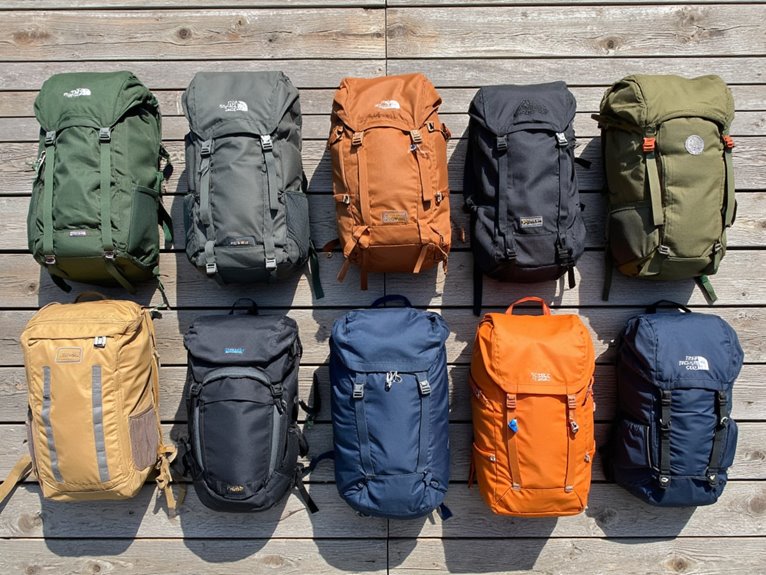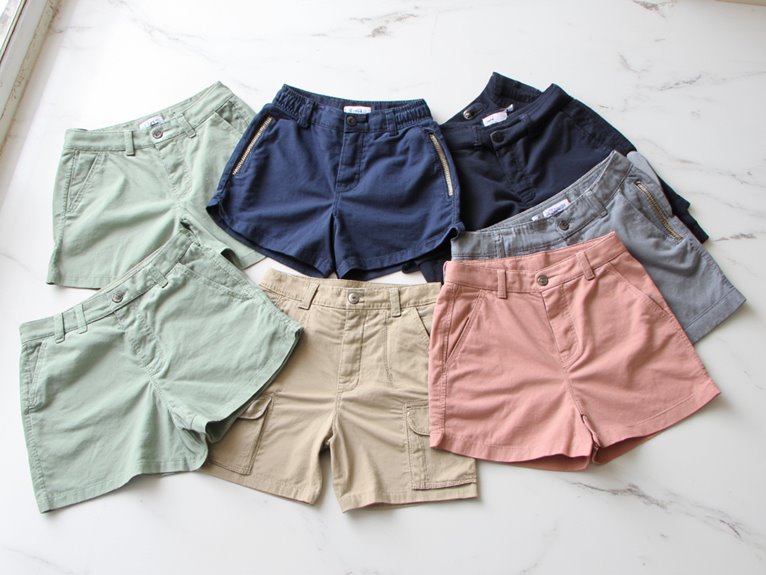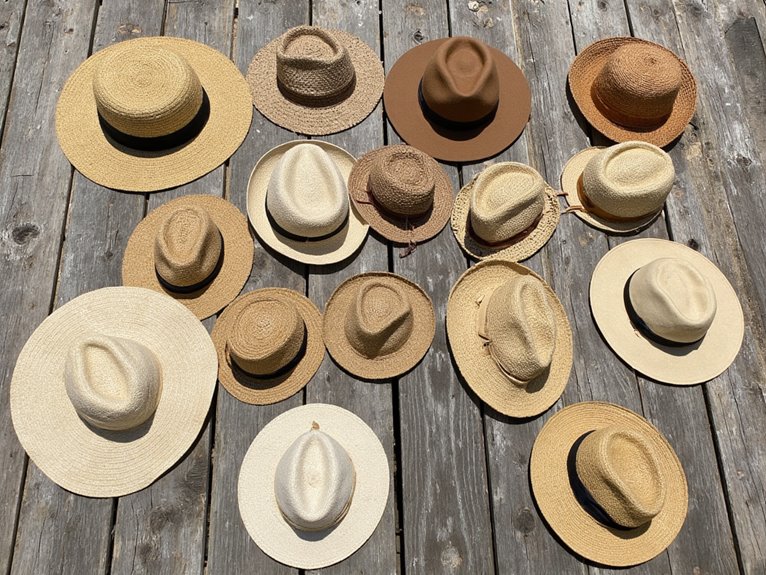How Much Weight Is Ultralight?
Ultralight backpacking is all about shaving pounds while maintaining comfort and safety. The traditional backpacker's 50-60 pounds of gear is a far cry from the ultralighter's goal of 20 pounds or less. Thru-hikers have mastered the art of paring down to an average of 25 pounds. The "big three" – shelter, pack, and sleeping bag – should total under 10 pounds for the truly dedicated. But how do you get to this weight without sacrificing safety? The key lies in innovative gear choices, clever food packaging, and strategic clothing and footwear selections. There's more to learn about walking the fine line between ultralight and ultrareckless…
We are supported by our audience. When you purchase through links on our site, we may earn an affiliate commission, at no extra cost for you. Learn more. Last update on 31st December 2025 / Images from Amazon Product Advertising API.
Defining Ultralight Backpacking
Ultralight backpacking, a pursuit that blends art and science, is a meticulous approach to wilderness travel that prioritizes minimalism and efficiency while maintaining comfort and safety.
It's not just about shedding pounds, but about optimizing every aspect of your gear and technique to create a more enjoyable and sustainable backpacking experience.
This philosophy extends beyond gear lists and weight ratios, encompassing skills like navigation, campcraft, and environmental awareness.
By embracing ultralight principles, backpackers can hike farther, faster, and with greater ease, all while minimizing their ecological footprint.
It's a delicate balance of risk management, resourcefulness, and creativity – and, when done correctly, it can be utterly liberating.
The Weight of Traditional Gear
Traditional backpackers often lug around a whopping 50-60 pounds of gear, a staggering weight that can make even the most enthusiastic hiker feel like a pack mule.
This hefty load typically includes a bulky tent, a heavy sleeping bag, and a behemoth of a backpack.
Add to that the weight of a camp stove, fuel, and cooking gear, and you've got a recipe for aching backs and tired legs.
It's no wonder many backpackers return from their trips feeling more exhausted than exhilarated.
The weight of traditional gear can be a significant obstacle, making it difficult to enjoy the great outdoors.
The Rise of Ultralight Enthusiasts
In recent years, a growing contingent of backpackers has emerged, driven by a singular focus on shedding pounds – literally and figuratively – to rediscover the joy of unencumbered wandering.
This new breed of ultralight enthusiasts has sparked a transformation in the backpacking community, with many opting for featherweight gear and DIY modifications to shave precious ounces from their packs.
The pursuit of ultralight nirvana has become an all-consuming passion, with devotees enthusiastically sharing their discoveries and innovations online.
As a result, the boundaries of what's possible with lightweight backpacking are being constantly pushed, and the benefits of traveling light are being rediscovered by a new generation of adventurers.
Average Pack Weights for Thru-Hikers
Among the most dedicated adherents to the ultralight ethos, thru-hikers – those intrepid souls tackling long-distance trails – have whittled their pack weights down to an astonishing average of around 25 pounds.
This remarkable feat is a demonstration of their ingenuity and willingness to scrutinize every ounce of gear.
By paring down their packs to the essentials, thru-hikers can cover greater distances with less fatigue, allowing them to fully immerse themselves in the wilderness experience.
Of course, achieving such a low pack weight requires a deep understanding of one's needs and a healthy dose of self-discipline.
But for those willing to put in the effort, the rewards are well worth it.
The Big Three: Shelter, Pack, and Bag
As thru-hikers continue to push the boundaries of ultralight backpacking, their focus turns to the so-called 'Big Three' – shelter, pack, and sleeping bag – which collectively account for the lion's share of pack weight and offer the greatest opportunities for drastic reductions.
These three items can easily add up to 10 pounds or more, making them prime targets for weight reduction.
By swapping out traditional gear for lighter alternatives, thru-hikers can shave pounds off their packs without sacrificing comfort or safety.
For example, a silnylon tent can weigh half as much as a traditional model, while a frameless backpack can save a few pounds compared to a traditional pack.
Sleeping Bag and Pad Options
In the realm of sleeping bag and pad options, the age-old debate persists: down-filled or synthetic insulation?
The answer, of course, depends on your personal preferences and the demands of your adventure.
As we delve into the pros and cons of each, we'll also examine the latest innovations in lightweight pad technology, because a good night's sleep is just as vital as a lightweight pack.
Down Filled or Synthetic
In the ultralight weight enthusiast's quest for the perfect night's sleep, the age-old debate between down-filled and synthetic sleeping bag and pad options rages on, with each side boasting its own unique advantages and drawbacks.
Down-filled options offer exceptional warmth-to-weight ratios, but synthetic alternatives shine in wet conditions, where down-filled bags can lose their insulating properties.
Synthetic options are often more affordable, but down-filled bags pack down smaller and lighter.
Ultimately, the choice between down-filled and synthetic comes down to personal preference, climate, and priorities.
If you're a fair-weather camper, down-filled might be the way to go.
But if you're tackling wet or humid environments, synthetic could be the better bet.
Lightweight Pad Options
While sleeping bags often steal the spotlight, a good night's rest in the backcountry also relies on a comfortable and lightweight sleeping pad that can keep up with the demands of ultralight enthusiasts.
In search of lightweight pad options, there are several choices to ponder.
Inflatable pads, like the Therm-a-Rest Trail Lite, offer exceptional comfort at a mere 11.8 ounces.
Foam pads, such as the NEMO Equipment Astro, provide a more budget-friendly option at 12.5 ounces.
For the ultimate in ultralight luxury, look in the realm of air-filled pads like the Big Agnes AXL, weighing in at a scant 8.8 ounces.
Whichever option you select, rest assured you'll be sleeping like a baby in no time – and carrying a lot less weight to boot!
Backpack and Shelter Innovations
By shedding pounds from their packs, backpackers can hike longer, stronger, and more comfortably, which has driven innovations in ultralight backpack and shelter design.
The result is a new generation of backpacks that are both lighter and more durable. Look for packs with advanced materials, clever compression systems, and ergonomic designs that redistribute weight for ultimate comfort.
In shelter innovations, tarps and hammocks have become popular alternatives to traditional tents, offering reduced weight and increased versatility.
Additionally, new fabrics and pole designs have made tents lighter, stronger, and more spacious.
With these advancements, backpackers can enjoy a more comfortable, convenient, and enjoyable wilderness experience.
Cooking Gear and Food Choices
In the pursuit of ultralight weight, every gram counts in selecting the right stove and pot combination, as even a slight reduction in weight can make a significant difference over the course of a long hike.
A vital aspect of this is optimizing our cooking setup and strategically choosing food packaging options, as we can shave precious ounces off our overall pack weight by doing so.
Stove and Pot Weights
A backpacker's cooking gear can be a significant contributor to overall pack weight, with stove and pot combinations alone often tipping the scales at over a pound.
However, shedding ounces from your cooking setup can be achieved with some clever choices.
Consider a titanium pot, which can weigh as little as 6 ounces, paired with a compact stove like the MSR PocketRocket, which tips the scales at a mere 3 ounces.
Don't forget to ditch the heavy fuel canister and opt for a smaller, lighter alternative.
Food Packaging Options
Lighter cooking gear is only half the battle; the real weight savings come from clever food packaging options that don't sacrifice flavor for frivolity.
By ditching bulky packaging, you can shave precious ounces from your backpack. Look for compact, resealable bags or containers that keep food fresh and protected.
Consider dehydrating or repackaging meals to eliminate excess packaging. For example, decanting spices and seasonings into smaller containers can make a significant difference.
Clothing and Footwear Strategies
Every ounce counts in the sphere of ultralight backpacking, and clever clothing and footwear strategies can shave precious pounds from your pack without sacrificing performance or comfort.
One approach is to adopt a 'layering' system, where you wear multiple thin, breathable layers instead of a few heavy, insulated ones.
This allows for better temperature regulation and reduces the need for bulky items.
Additionally, consider wearing trail running shoes instead of heavy hiking boots, and opt for quick-drying, moisture-wicking fabrics that dry quickly and minimize weight.
The Ultralight Gray Area
While embracing the principles of ultralight backpacking can be liberating, it's just as essential to acknowledge that there's a fine line between trimming fat and sacrificing safety.
The ultralight gray area is where enthusiasm meets recklessness, and it's vital to recognize when you're crossing that line.
It's tempting to ditch the 'just in case' items, but doing so can lead to disastrous consequences.
Remember, ultralight doesn't mean ultrareckless.
Be honest with yourself: are you truly prepared to handle an emergency situation with a stripped-down kit?
If not, it's time to reassess your priorities.
Striking a balance between weight and preparedness is key to a successful – and safe – ultralight adventure.



